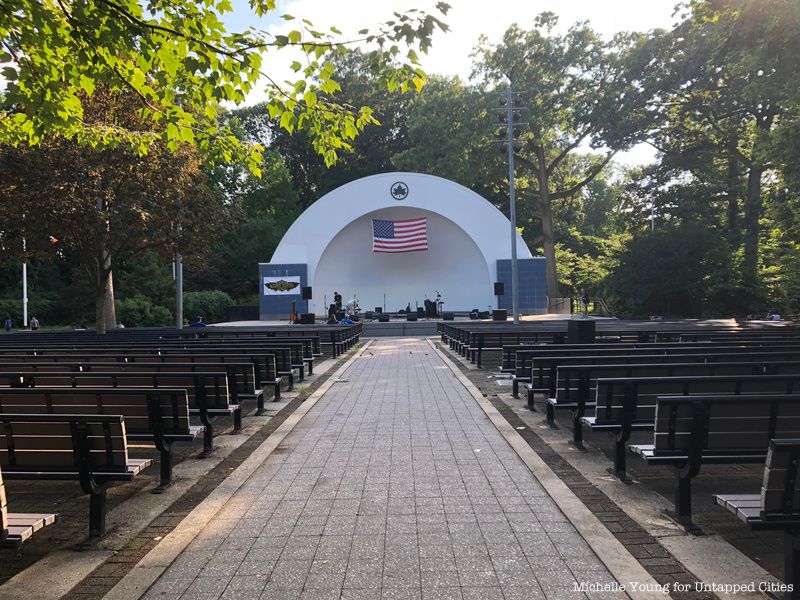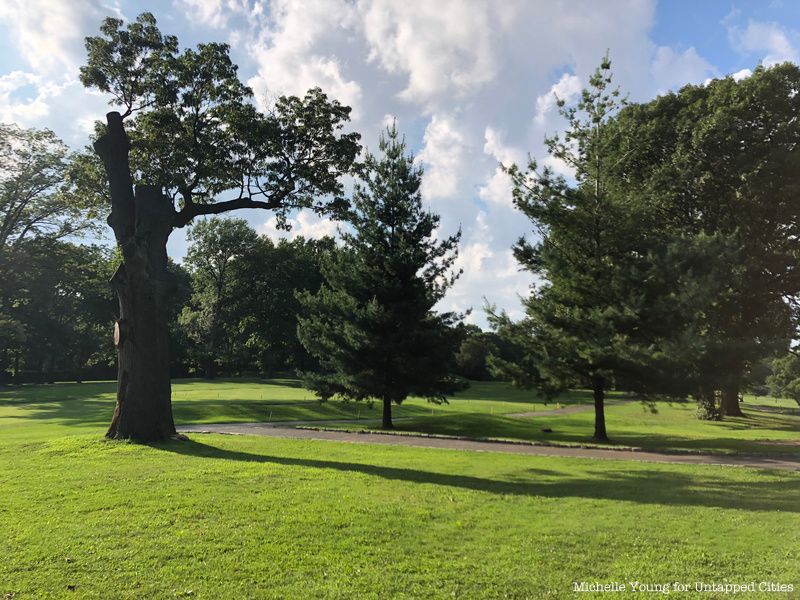NYC’s Forgotten ‘War on Christmas Trees’
Discover how an obscure holiday crackdown affects festive street vendors today!


Although Forest Park has been around for over a century, it remains relatively unknown compared to the city’s famous green spaces. While Central Park and Brooklyn Bridge Park boast all the glory, Forest Park, located in Queens, shies away from the spotlight. As such, it’s easy to find a secluded, quiet spot inside the forested refuge. It’s an idyllic getaway for locals who simply want to take a stroll or crack open a book. And like any hidden gem, it holds a few secrets:

The site of what is now Forest Park was once inhabited by the Rockaway, Delaware and Lenape Native Americans before the Dutch West India Company settled the area in 1634, and established towns. Nearly two centuries later, these settlements came together as the independent City of Brooklyn.
Throughout the 19th century, the site was also occupied by various landowners until the Brooklyn Parks Department purchased a parcel of land to begin constructing a large public park. As the acquisition process continued over the years, the area came to be known as Brooklyn Forest Park. In fact, Brooklyn’s Park Department operated all of Queen’s parkland until the borough officially established its own Parks Department in 1911.

Forest Park wasn’t always covered in spacious woodlands. Twenty thousand years ago, the Wisconsin glacier molded the ground and left behind the Harbor Hill Moraine, a collection of small mounds, which characterize what is known as “knob and kettle” terrain. Today, the 93-acre Gully within the park – a popular birding area for visitors – is an example of a glacial depression.

Image via Wikimedia Commons, The World’s Work
Landscape architect Frederick Law Olmsted is best known as the designer of Central Park and Prospect Park, which he developed alongside architect Calvert Vaux. Today, these green spaces are some of the most popular in New York City, welcoming 25 million and 10 million visitors each year, respectively. In comparison, only 900,000 people visit Forest Park annually – partly due to its the fact that there are no nearby subway stations. In the late 19th century, when Olmsted surveyed the land to construct Forest Park, he purposely designed the space so that it would maintain its “pastoral quality.” Its inaccessibility now helps to preserve its idyllic nature.

While conducting his survey of the land in 1895, Olmsted noted that Forest Park is bisected by a series of transportation tracks: the Rockaway Line, two Long Island Rail Road lines and the Montauk Line – the only one in operation today. Even so, Forest Park encompasses the largest continuous oak forest in Queens.

Although Forest Park lacks Central Park’s visibility, it’s still highly regarded for its diverse and scenic woods. In fact, the New York City Department of Parks and Recreation ranked Forest Park, and its pine grove, as one of the “Most Photogenic Woodland Areas.” The grove is mostly comprised of Eastern White Pines, the largest conifer and most valuable tree of the Northeast.

A visionary rendering of QueensWay
As noted in the New York Times, Forest Park touches three of the most dangerous streets in Queens: Woodhaven Boulevard, Jamaica Avenue and Union Turnpike. To reach the park, roughly 70 percent of its annual visitors use a car. However, it has been argued that QueensWay, a community-led initiative to transform a stretch of an abandoned railway into a linear park, could make Forest Park more accessible to the public, thereby reducing the number of pedestrian deaths.
One of three greenhouses located in the city, the Forest Park Greenhouse is used by gardeners to cultivate tens of thousands of plants for flowerbeds in Queens and Brooklyn. Built in 1910, the complex utilizes a computerized system to control the lighting, humidity and temperature inside the space. Gardeners also congregate annually to decide which species are needed for various gardens.

According to a 2009 New York Post article, Forest Park, along with Highland Park on the Brooklyn-Queens border, is a “hotbed” for animal sacrifices performed at night. Park rangers note the various reasons for the sacrifices, which include anything from devil worship to voodoo.

Regarded as the park’s crowning jewel, the Forest Park Carousel showcases the work of wood-carver Daniel Carl Muller, who crafted figures for 12 carousels during his lifetime. The ride, first operated in 1903, is one of only two surviving carousels that depict his detailed work, featuring horses, unicorns and an array of other animals. It was also used as a filming location in Marvel Studio’s Netflix Series Daredevil.

Forest Park’s 110-acre, 67-par golf course is considered to be one of the most challenging courses in the city due to its unique, hilly terrain. Established around 1905, the course takes up nearly one-fifth of park’s total acreage, and is modeled after Scottish links. Hole No.4, at 475 yards, Par 5, was ranked second in a list of the 18 Best Holes in New York City.
Next, check out The Hidden Emerald Gem: Forest Park in Queens and read more on QueensWay.
Subscribe to our newsletter